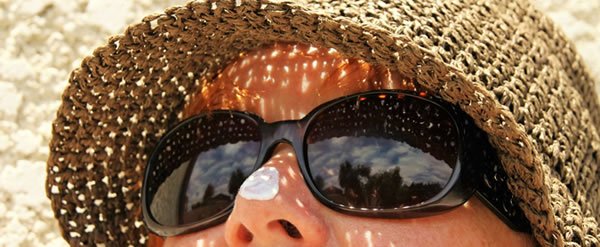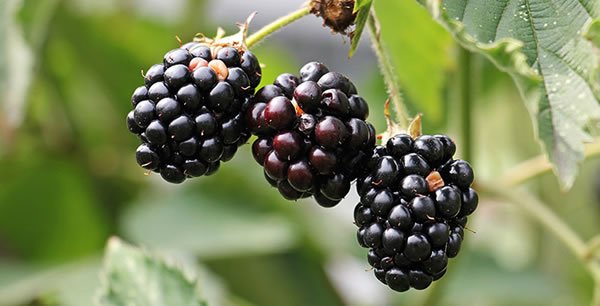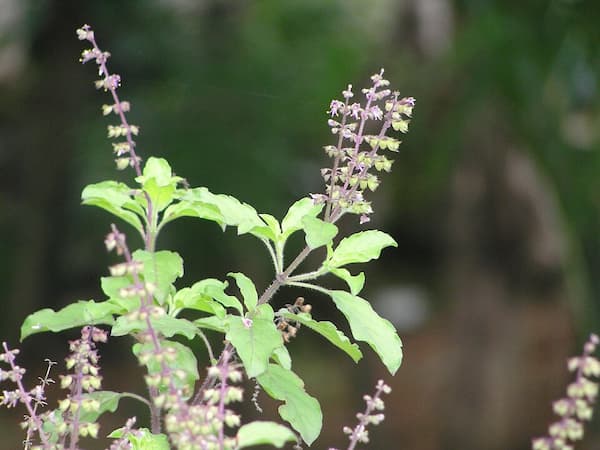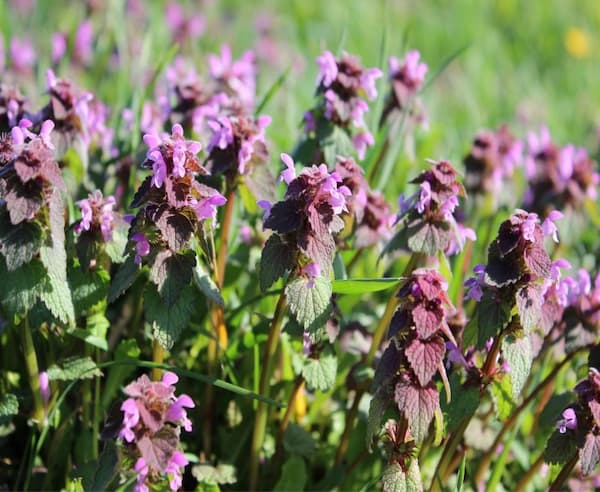Do It Yourself Sunscreen
I found this great article for you:
 Do It Yourself Sun Screens….
Do It Yourself Sun Screens….
And why you should!
With recipes and suggestions on before and after spending time in the sun
SUNSCREENS By Scott Sexton

Growing up, I was always told to put my sunscreen on. “Any time you are outside, you should be wearing sunscreen,” said the dermatologist. “Every bit of exposure adds up. You should wear it every day, no matter the weather or time of year! Even in the shade! Even indoors!” Yes, I really was told that.
I hated the feeling of sunscreen on my skin, I wore it sometimes, if I was going to be out all day, or if I went swimming. But I usually just got a burn early in the summer and relied on a tan to carry me through the season.
Later, as an adult, I started hearing rumblings of the dangers of sunscreen chemicals. Some voices were even saying that sunscreens caused skin cancer. That’s ironic. It got me curious. I did a little digging … and what I found was startling.
The rates of melanoma in the US have risen over time, despite the increased use of sunscreens and our spending more time indoors.1) But let’s not leap ahead too quickly. We don’t want to oversimplify things. Cancer is a complex topic with many contributing factors. Still, the correlation between sunscreen and cancer merits a closer look.
Chemical Barriers – Are the Chemicals Harmful?
Chemical sunscreens have some problems. Their active chemicals have a habit of being approved as safe only to be discovered as harmful years later.2) They have a history of causing allergic reactions.3) And while an approved chemical might be safe in its intact form, it can react to other chemicals or break down under sunlight, creating multiple untested chemicals compounds.
Many of the ingredients in sunscreens are endocrine disrupters.4) That means they alter hormone production and function. And altering hormones necessarily means altering growth and development.
We’re told that it’s especially important for kids to wear sunscreen, because their skin is thinner and more vulnerable to the sun’s rays. But their skin is also more permeable to sunscreen chemicals, and their smaller size means that we’re putting proportionally more sunscreen on them.
It gets worse yet. Sunscreen chemicals have been found in breast milk, and may cross the placenta to reach unborn babies.5)6) So even infants and the unborn are being exposed.
Do Chemical Barriers Actually Protect You?
But at least we’re protected from sun damage, right? Well, not exactly. There are different types of ultraviolet light. When it comes to sun damage, we’re usually concerned with UVA and UVB light. Both cause damage, but in different ways. UVB light is absorbed in the outermost layer of skin. It causes sunburns, but also stimulates the creation of vitamin D (more on that below). UVA light penetrates deeper and is more associated with skin aging. They both contribute to skin cancer, though sources will disagree on which is more dangerous.
The SPF rating on your sunscreen only applies to UVB light, not UVA. Most sunscreens only protect you from UVB light. And even so-called broad-spectrum sunscreens often provide only the minimum protection needed to legally be labeled as such. A scale for UVA protection does exist, but many broad-spectrum sunscreens do not list it. This makes it difficult to assess a sunscreen’s actual protective factor.
This is all very important! If you’re only protecting yourself from UVB rays, you’re preventing a sunburn, but not the DNA-damaging effects of UVA light that can lead to cell aging and cancer. By delaying the burn, we’re encouraged to stay out in the sun longer, exposing us to more UVA light than if we’d worn no sunscreen at all.
Physical Barriers

Some sunscreens use a strategy of physical barriers, rather than chemical ones. Titanium oxide (TIO2) and zinc oxide (ZNO) can effectively block both UVA and UVB rays. And unlike chemical sunscreens, these metals are unlikely to provoke allergic responses in people.
That’s a really good start. But regular sized TIO2 and ZNO particles leave a white residue on the skin. The residue is harmless, but we’ve decided that it looks goofy. Thus, nanoparticles were introduced.
Nanoparticles are almost unimaginably tiny, 1/5,000 the size of a human hair. They allow more visible light to get through, making them appear more clear. That’s good. But they also let more ultraviolet light through. That’s bad.
They can also absorb through your skin, age it, and generate dangerous byproducts.7) They can even cross the blood-brain barrier.8) How bad is that? Check back in 30 or so years when the long-term data comes in. I’d rather not be a guinea pig, so I’m opting out on nanoparticles.
The Vitamin D Paradox
Even if you have a safe and effective sunscreen (DIY instructions are below8), you might not want to wear it all the time. Vitamin D is produced as a result of UVB rays hitting the skin. Remember, this is the type of ultraviolet light that most sunscreens are extra good at blocking out.
The more sunscreen we wear, the less vitamin D we produce, and the reduction is not insignificant. An SPF of only 8 can reduce vitamin D production by 92.5%. SPF 15 reduces its creation by more than 99%.
The reason this matters is because vitamin D plays a huge role in keeping us healthy, and affects the development and function of our bodies. One particularly relevant benefit is that it helps to prevent many forms of cancer, including skin cancers.9)
So by trying to avoid sunburns, we’re often just preventing the production of vitamin D and increasing our total exposure to UVA rays. Then the sunscreen chemicals absorb into our skin, disrupting our hormones and possibly further contributing to cancer risks. Again, I don’t want to oversimplify this. It’s a complex topic. But sunscreens aren’t looking good right now.
So should we avoid sunscreens and just take the burn? No. Sunburns are bad, too. But how can we safely avoid sun damage?
Smart Sun Strategies 
You can protect your skin without resorting to chemicals and nano-sized particles. And if you do get a burn, you can help stimulate your natural healing processes to repair the damage. A few suggestions are common sense:
- Cover Up: Wear long sleeves and a wide brimmed hat when you’re going to be out in the sun for extended periods.
- Avoid Peak Exposure: Stay indoors or in the shade from 10:00 a.m. to 2:00 p.m.
- Use a Natural, Nontoxic Sunscreen
DIY Herbal Sunscreens

We all need some sun exposure to manufacture vitamin D. People with darker skin or those who live very far from the equator need more exposure. But many of us will be able to meet the needed exposure and then some. How do we protect ourselves from excess solar radiation, without resorting to dangerous chemical or nano-metal sunscreens? You make your own, of course!
Olive oil and coconut oil have an SPF rating of around 7 or 8, all by themselves, meaning you could stay out 7 or 8 times longer before starting to burn.10) Just rub it right on your skin. This may not sound impressive compared to the SPF 50 you’re likely to see in stores. But remember that we don’t necessarily want to block out all of the UV radiation. We want some for the production of vitamin D, and we still want to burn if we stay out too long. Why? Because these oils, like most commercial sunscreens, are better at blocking UVB rays than UVA, and we need our bodies to tell us if we’re getting too much sun.
Several essential oils, such as lavender, eucalyptus, and carrot seed, also have sun-protecting power and can be mixed with your olive or coconut oil. You could also infuse the oil with protecting herbs, such as lavender, St. John’s wort, or even tea.
When it’s time for some serious outdoor activity, you can mix zinc oxide or titanium oxide into your oil. This will give you a higher level of sun protection, and it will block both UVB and UVA rays. Just remember to buy the non-nano sized particles. Also, wear a mask and goggles while working with this powder. Once it’s fully incorporated into the oil, it’s perfectly safe. But you don’t want to get the dry powder in your lungs or eyes.
The percentages are flexible, but many people use between 5% and 35% (by weight) zinc oxide or titanium oxide in their sunscreen formulas. The more powder you use, the higher the protection factor. You can also add vitamin E, shea butter, or your own special additions. Here’s an example formula:
Super Simple Sunscreen Formula
- 1 ounce coconut oil
- Zinc oxide (0.5 – 0.35 ounce)
If your coconut oil has solidified, heat it in a sauce pan on warm. Pour the liquified coconut oil into a disposable (or compostable) container. Put on a mask and goggles to protect yourself from zinc oxide dust. Stir the zinc oxide into the coconut oil until fully combined. Then pour the mixture into the container of your choice. Remember to reapply your sunscreen frequently, especially after swimming or heavy sweating, and refrigerate it when not in use. It should last for around 6 months.
Jazzy Additions

Looking for something a little fancier? Here are some fun additions. And remember that you can alter the proportions.
- 0.5 ounce shea butter
- 0.1 ounce vitamin E oil
- 15 drops lavender essential oil
- 10 drops peppermint or eucalyptus essential oil
- St. John’s wort
Place the herbs and the coconut oil in a pot on your stovetop. Heat them on low until the oil takes on the color of the herbs. Then strain out the herbs, allow the oil to cool a bit, and add your other ingredients.
Herbal After-Sun Care

We also have quite a few plants willing to lend a hand if you’ve already gotten too much sun. A lot of these are the same plants you use to prevent burns. Olive oil is a good choice for nourishing and healing. Coconut oil works really well, too. You can enhance this by infusing the oil with St. John’s wort or lavender. If you don’t have time to infuse the oil with herbs, you can also use essential oils.
Of course, the classic sunburn plant is aloe vera. Aloe is easy to grow indoors, so you can have a plant ready wherever you live. There are several strategies for using aloe, but I think the easiest is to slice a leaf lengthwise, then use a spoon to scrape out the slimy innards into a bowl or plate. Try to get only the gel, and not the green, outer leaf. Gently apply the gel to sunburned skin. Store unused gel in the refrigerator.
Mallow family plants are also very soothing and healing to sun-damaged skin, and can be substituted in place of aloe. You can also use the slimy insides of a prickly pear cactus. Scoop it out and use it like aloe gel. You could even split the pad in half and lay it across the skin. Just be sure and turn it right side up!
Oats are another good choice for relieving sunburn pain. You can soak the oats in water until they are very soft, then gently glop them onto the burned area. Or add oats to your bath water. Herbal baths are a great way to dispense herbal care across your whole body.
Any plants that stimulate healing could also be added to your care regimen. Comfrey, plantain, and calendula are all good choices for that.
Edible Sunscreen

A diet high in a variety of antioxidants will help your skin resist and repair damage from ultraviolet light. The Oxygen Radical Absorbance Capacity (ORAC) number of a food shows its ability to neutralize free radicals, preventing sun damage before it starts. Most of the foods in your garden have high ORAC numbers. This is especially true of leafy greens and berries. Not all of the plants below will be possible for every garden, but you can still grow your own sunscreen while you Grow Your Own Groceries –
ORAC Scores Per 100 Grams
- Black Pepper: 34,000
- Blackberries: 4,000
- Broccoli (boiled): 2,100
- Carrots: 700
- Chili Powder: 24,000
- Coffee: 16,000
- Curry Powder: 49,000
- Dried Oregano: 175,000
- Dried Parsley: 74,000
- Dried Rosemary: 165,000
- Dried Thyme: 157,000
- Eggplant: 900
- Elderberries: 14,700
- Fresh Oregano: 14,000
- Garlic: 5,500
- Green Tea: 1,300
- Ground Cinnamon: 130,000
- Ground Cloves: 290,000
- Ground Ginger: 39,000
- Ground Nutmeg: 70,000
- Ground Sage: 120,000
- Ground Turmeric: 127,000
- Onions: 900
- Peach: 1,900
- Plums: 8,000
- Pomegranates: 4,500
- Raspberries: 5,100
- Red Cabbage: 2,400
- Red Grapes: 1,800
- Spinach: 1,500
- Strawberries: 4,300
- Unsweetened Baking Chocolate: 50,000
- Vanilla Beans: 122,000
The use of ORAC scores is now in contention, and may be a bit of an oversimplified approach. However, the scores are still a good place to start. For example, researchers found that high-flavanol cocoa ingestion reduced skin reddening by 50% after 6 weeks, and 70% after 12 weeks.11) And I can anecdotally report that my coffee-drinking co-workers have demonstrated greater resistance to sunburns than the non-coffee drinkers.
Conclusion
Don’t get burned by the sun or the sunscreen. Soak up a sensible amount of sunlight, avoiding the peak UV hours. Make your own safe sunscreen for those times you’re going to get too much sun. And be sure to “eat your sunscreen” by loading up your diet with antioxidant rich foods like those listed above.
Scott Sexton is a TGN Trailblazer, a highly experimental gardener, an unrelenting weed-eater, and a largely non-profit herbalist (much to his wife’s chagrin). When Scott is not teaching foraging classes, testing out theories in the garden, or grazing in the forest, he can be found at his Facebook page, “A Forager’s Guide to the Zombie Apocalypse”.
See Scott’s article, How to Make Herbal Sunscreen, and his references.
And don’t forget to take along Hummingbird’s all-natural, chemical free Bug-Off Spray and Hummingbird’s Healing Salve (for those cuts, scratches and bee stings) along on your outdoor adventures!
Peace and Good Health!
Judi








